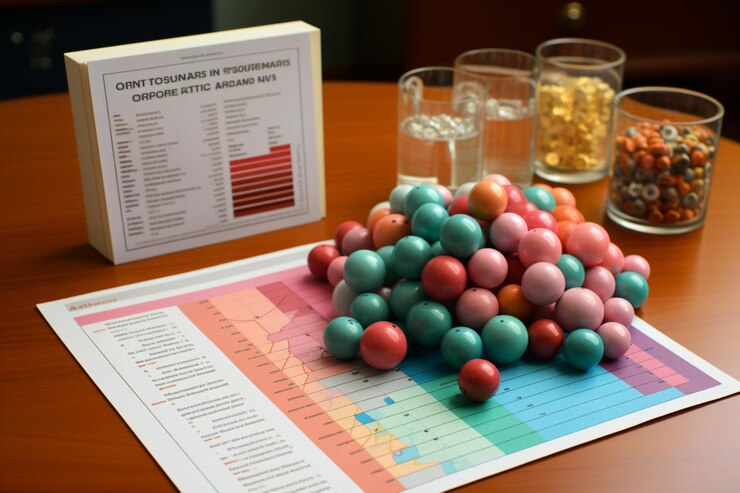Naltrexone, an opioid receptor antagonist, has gained attention for its applications in treating opioid dependence and alcohol use disorders. However, its effects can vary significantly among individuals, leading some to report extreme fatigue, especially at doses like 4.50 mg. This article delves into the mechanics of naltrexone, its prescribed dosages, the potential for extreme tiredness, and strategies for managing this side effect.
What is Naltrexone?

Naltrexone was first approved by the FDA in 1984 as a treatment for opioid dependence. It works by blocking the effects of opioids at the receptor level, thereby reducing cravings and the rewarding effects of alcohol. More recently, it has been used off-label in lower doses for various conditions, including obesity and autoimmune disorders. The standard doses range from 50 mg for opioid use to 4.50 mg in some experimental or adjunct therapies.
How Naltrexone Works
Naltrexone operates primarily by antagonizing the mu-opioid receptors in the brain. This blockage prevents opioids from eliciting their euphoric effects, which is crucial for individuals recovering from addiction. The mechanism also extends to reducing the euphoric effects of alcohol, making it beneficial for those seeking to reduce or eliminate alcohol intake.
The Dosage Spectrum
Naltrexone is typically prescribed in 50 mg doses for opioid dependence. However, lower doses like 4.50 mg are used in specific therapeutic contexts. For example, recent studies have explored low-dose naltrexone (LDN) as a treatment for chronic pain conditions, autoimmune diseases, and even mental health issues. The idea behind LDN is that it may stimulate the body’s natural endorphin production, offering relief from various symptoms.
Extreme Fatigue and Naltrexone
Despite its benefits, naltrexone can have side effects. One of the more troubling side effects reported by some users is extreme Naltrexone or fatigue. This symptom can be particularly pronounced at lower doses, such as 4.50 mg.
Why Does Fatigue Occur?
- Mechanism of Action: Naltrexone’s blocking of opioid receptors may lead to a reduction in the body’s natural endorphins. Endorphins play a crucial role in pain relief and mood enhancement. A decrease in these hormones can result in feelings of tiredness and a general lack of energy.
- Adjustment Period: When starting naltrexone, the body may require time to adjust to the new chemical environment. This transition can lead to various side effects, including fatigue, as the body recalibrates its neurochemistry.
- Individual Differences: Everyone metabolizes medications differently. Factors such as genetics, pre-existing health conditions, and concurrent medications can influence how naltrexone affects energy levels.
- Underlying Conditions: Many individuals seeking treatment with naltrexone may have existing conditions, such as depression or chronic fatigue syndrome, which can exacerbate feelings of tiredness.
Recognizing Extreme Fatigue
Extreme fatigue is more than just feeling tired; it can significantly impact daily functioning. Symptoms can include:
- Persistent sleepiness or drowsiness
- Difficulty concentrating
- Physical weakness
- Lack of motivation
If these symptoms are affecting your quality of life, it’s essential to address them with a healthcare professional.
Managing Extreme Fatigue While on Naltrexone
If you find yourself feeling extremely tired while taking naltrexone, there are several strategies you can employ to mitigate these effects:
- Consult Your Doctor: Before making any changes, consult with your healthcare provider. They can assess whether the fatigue is a side effect of naltrexone or related to another underlying issue. They may also consider adjusting your dose or exploring alternative treatments.
- Adjust Your Dosage: For some, a lower dose than 4.50 mg might be sufficient. Discussing dosage adjustments with your doctor can help find a balance that minimizes fatigue while still providing therapeutic benefits.
- Optimize Sleep Hygiene: Establishing a regular sleep routine, ensuring a comfortable sleep environment, and limiting caffeine and screen time before bed can improve sleep quality and help combat daytime fatigue.
- Incorporate Light Exercise: Gentle physical activity, such as walking or yoga, can boost energy levels and improve mood. Exercise releases endorphins, which may counteract some of the fatigue experienced on naltrexone.
- Nutrition: A well-balanced diet rich in vitamins and minerals can support overall energy levels. Foods high in omega-3 fatty acids, antioxidants, and complex carbohydrates can be particularly beneficial.
- Hydration: Dehydration can contribute to fatigue. Ensure you are drinking enough water throughout the day to stay hydrated.
- Mindfulness and Stress Management: Techniques such as meditation, deep breathing exercises, and progressive muscle relaxation can help reduce stress, which in turn can lessen feelings of fatigue.
Conclusion
Naltrexone, particularly at a dose of 4.50 mg, can be an effective tool for managing opioid and alcohol dependence, as well as other conditions. However, its potential to cause extreme fatigue cannot be overlooked. Understanding the reasons behind this fatigue and actively managing it can help individuals maximize the benefits of naltrexone while minimizing unwanted side effects.
More read:
Vincent Pensabene Total Apex Sports: Redefining the Athletic Experience

